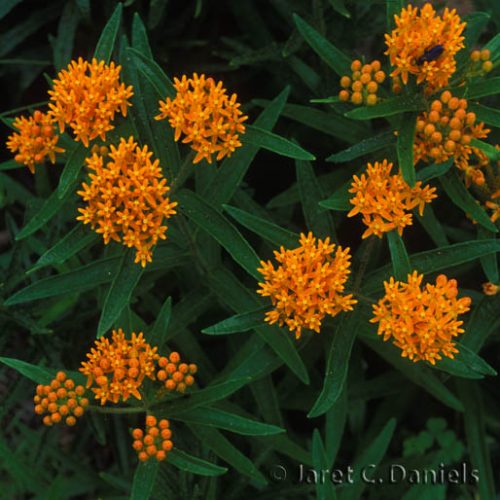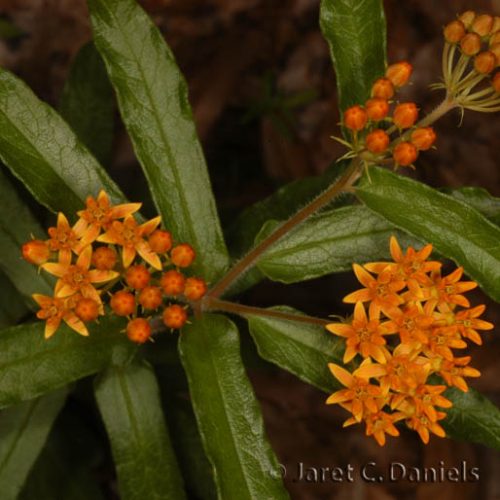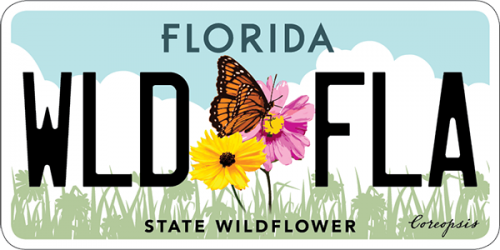
- Family name: Apocynaceae or Asclepiadaceae
- Host plant for: Monarch (Danaus plexippus), rarely used by the Queen (Danaus gilippus)
- General description: Erect to sprawling herbaceous perennial with alternate leaves and showy terminal clusters of small bright orange flowers. Long blooming period provides lasting color for gardens. Successful culture requires open, sunny locations and well-drained soils. Dies back to the ground in winter across much of the state; evergreen only in southernmost counties. Flowers attract butterflies and other pollinators.
- Type: perennial
- Flower: Small bright orange flowers in terminal clusters
- Bloom time: Spring to fall
- Soil type: well-drained, sandy soil; occasionally moist sites
- Maximum height: 3 feet

- Candidate for home gardens: Excellent but often somewhat difficult to grow, both larval host and nectar source
- Availability in nursery: Readily available
- Frenquency in the wild: Common
- Habitat: sandhills, pine flatwoods, hardwood forests, ruderal
- Range in Florida
 The Florida Wildflowers & Butterflies projects at the Florida Museum are sponsored in part by the State of Florida and the Florida Wildflower Foundation, Inc.
The Florida Wildflowers & Butterflies projects at the Florida Museum are sponsored in part by the State of Florida and the Florida Wildflower Foundation, Inc.